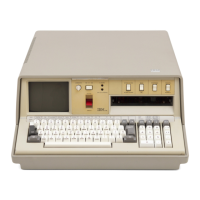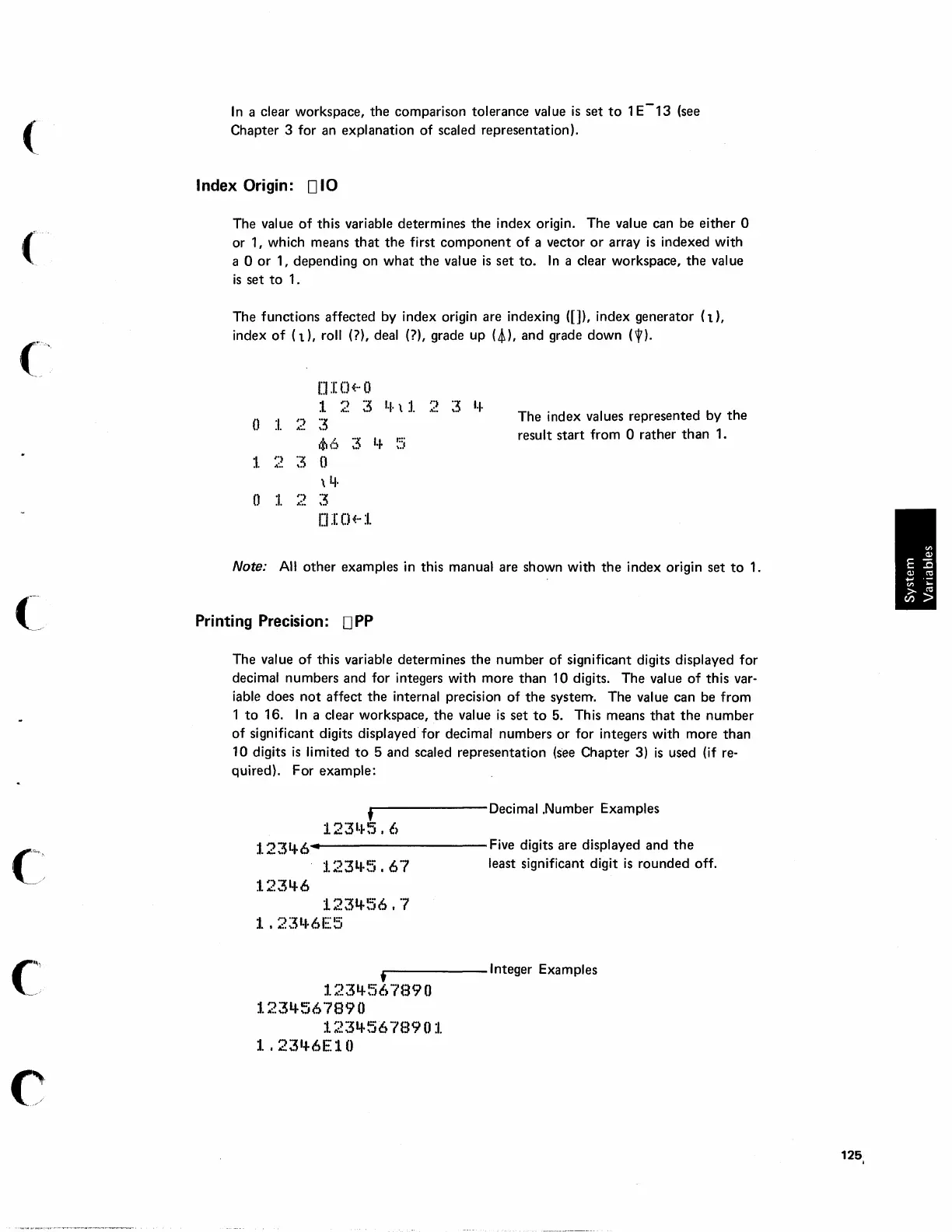(
c·
In
a clear workspace, the comparison tolerance value
is
set
to
1
E-13
(see
Chapter 3 for an explanation
of
scaled representation).
Index Origin:
010
The value
of
this variable determines
the
index origin. The value can be either 0
or 1, which means
that
the
first
component
of
a vector
or
array
is
indexed with
a 0
or
1, depending on
what
the
value
is
set
to.
In
a clear workspace,
the
value
is
set
to
1.
The functions affected by index origin are indexing ([]), index generator
(t),
index
of
(t),
roll (7), deal (7), grade up
(~),
and grade down
('f).
0
:1.
'')
,.:.
1 2
"X
,.)
0
:I.
2
[]IO~-O
1 2
3
3
(h6
:~
0
\
4·
~5
IJI()~-:I.
'+
\
1.
2
I..
~:j
:3
'+
The index values represented by
the
result
start
from 0 rather
than
1.
Note:
All
other
examples in this manual are shown with
the
index origin set
to
1.
Printing Precision:
DPP
The value
of
this variable determines
the
number
of significant digits displayed
for
decimal numbers and for integers with more
than
10 digits. The value
of
this var-
iable does
not
affect
the
internal precision
of
the
system. The value can be from
1
to
16.
In
a clear workspace,
the
value
is
set
to
5. This means
that
the
number
of
significant digits displayed
for
decimal numbers
or
for integers with more
than
10 digits
is
limited
to
5 and scaled representation
(see
Chapter 3)
is
used (if re-
quired). For example:
tr-------Decimal
.Number Examples
123'+5.
b
123'+6
....
1-----------
Five digits are displayed and
the
:I.
23lJ.~5
.
67
least significant digit
is
rounded off.
123lJ.6
123lJ.!56.
"7
1 .2:34·6E5
tr-------1nteger
Examples
:I.
231+5l)
7B9
0
:1.23'+567890
1
~.~3lJ.5l)
-'890
:1.
:I
.•
23'+6E
1
()
125.

